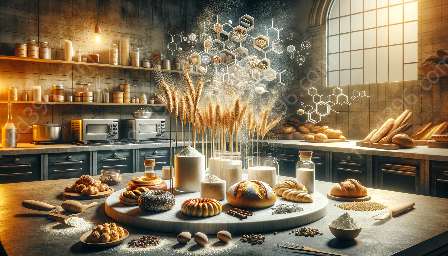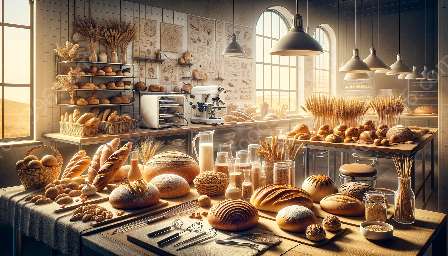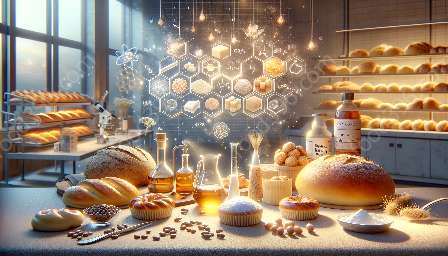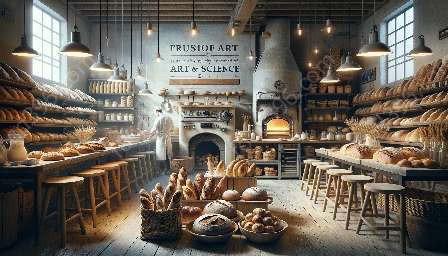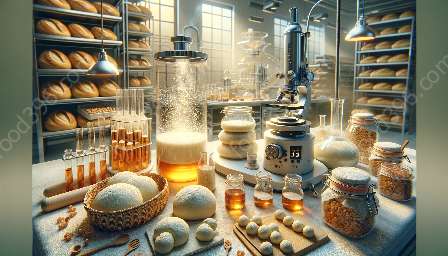Dairy products play a crucial role in the world of baking, contributing to the flavor, texture, and structure of various baked goods. Understanding the science behind the use of dairy products can help bakers enhance their creations and perfect their recipes. This topic cluster will delve into the fascinating relationship between dairy products and baking, exploring the different types of dairy products used, their unique properties, and their impact on the art and science of baking.
The Science behind Dairy Products in Baking
Baking is a perfect marriage of art and science, and dairy products are integral to this union. From milk and butter to cream and cheese, these dairy ingredients bring not only flavor but also crucial functional properties to baked goods. Understanding the science behind these dairy products can empower bakers to make informed choices and achieve exceptional results in their baked creations.
1. Milk
Milk is one of the most fundamental dairy products used in baking, and its composition significantly impacts the outcome of baked goods. With its blend of proteins, fats, sugars, and water, milk serves as a key liquid ingredient in many baking recipes. The proteins in milk, such as casein and whey, contribute to the structure and tenderness of baked goods, while the natural sugars and fats enhance flavor and texture.
Milk also plays a crucial role in the Maillard reaction, a chemical reaction between amino acids and reducing sugars that occurs during baking. This reaction creates the desirable golden brown color, aroma, and flavor in baked goods such as bread, pastries, and cookies. Additionally, buttermilk, with its slightly acidic nature, can tenderize gluten in dough, resulting in softer and more palatable baked products.
2. Butter
Butter is a staple dairy ingredient that adds richness, flavor, and texture to a wide range of baked goods. Its composition of milk fat, water, and milk solids enables it to function as a leavening agent, tenderizer, and flavor enhancer in baking. When butter is heated during the baking process, its water content turns into steam, contributing to the expansion and lightening of the baked product's texture.
Furthermore, the milk solids in butter undergo browning reactions during baking, leading to the development of complex, nutty flavors and the characteristic golden-brown crust on baked items. The unique plasticity of butter at room temperature also makes it an ideal ingredient for creating flaky pie crusts, delicate pastries, and creamy fillings.
3. Cream
Cream, with its higher fat content, adds luxurious richness and moisture to baked goods. When whipped, it transforms into delightful toppings, fillings, and frostings that elevate the visual appeal and flavor of cakes, cupcakes, and pastries. Cream also serves as a crucial ingredient in the production of butter, as the churning process separates the butterfat from the buttermilk, resulting in creamy, flavorful butter.
Moreover, the fat content in cream contributes to the tenderness and moistness of baked goods, resulting in a luscious mouthfeel and a delightful eating experience. Additionally, sour cream, with its tangy flavor and acidic nature, interacts with baking soda to create carbon dioxide gas, leading to improved leavening and a lighter texture in cakes and quick breads.
4. Cheese
Cheese is a versatile dairy product that enhances the flavor, texture, and nutritional profile of various baked goods. From sharp cheddar in savory muffins to creamy mascarpone in decadent cheesecakes, cheese adds depth, complexity, and umami to baked creations. The protein and fat content in cheese contribute to the moistness and richness of baked items, while its unique flavors and aromas bring a savory dimension to sweet and savory baked goods alike.
Additionally, the use of cheese in baking involves understanding the melting and browning behavior of different types of cheeses, allowing bakers to create gooey, golden toppings, and indulgent fillings. Whether grated, shredded, cubed, or melted, cheese is a versatile dairy ingredient that adds a touch of indulgence and sophistication to a wide range of baking recipes.
Conclusion
Understanding the role of dairy products in baking science & technology is essential for aspiring bakers and seasoned professionals alike. By appreciating the unique properties and contributions of milk, butter, cream, and cheese to the art and science of baking, individuals can elevate their baking prowess and create exceptional baked goods that delight the senses and nourish the soul.

